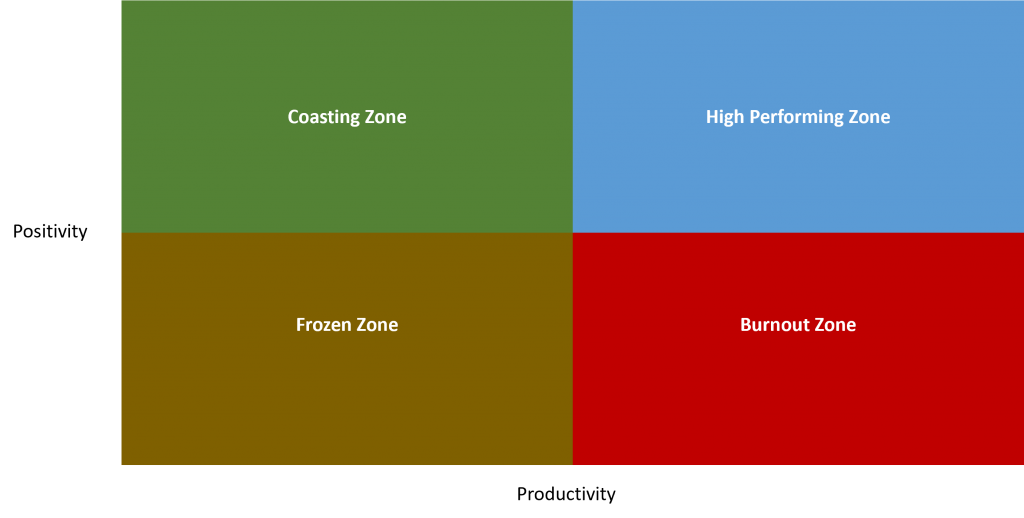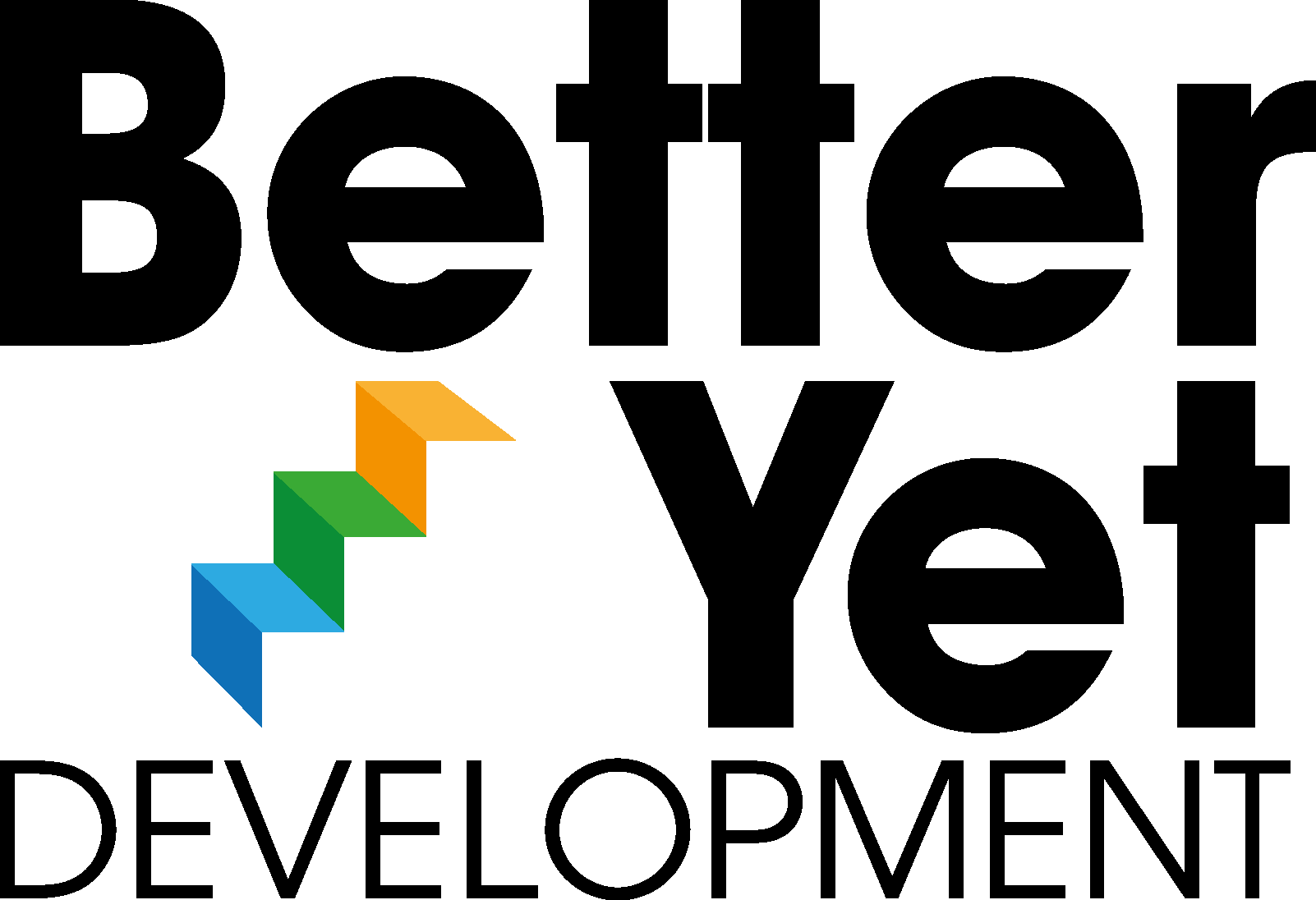In my work with teams, I’ll often use the framework below as the basis for a diagnostic assessment. Devised by Phil Sandahl, it looks at productivity (the things a team needs to do to deliver results) and positivity (the atmosphere that informs how they go about what needs to be done).

Whilst the ideal is to be high productivity and high positivity, what I’m seeing these days are increasing numbers of teams falling deeper into the red, Burnout Zone. These teams are usually delivering results and often, their productivity is increasing, but positivity is taking a hit. Whilst we’ve got used to back-to-back on-screen meetings, in order to get things done many have extended their working days in lieu of a commute. We’ve lost some of the camaraderie that held us together and many teams have reported falls in the quality of communication between members, trust and the ability to manage conflict and disagreement constructively.
Increasing productivity at the expense of positivity is a slippery slope. Whilst sheer hard work ensures the goals are delivered in the short term, without the restorative energy of positivity, teams face increasing exhaustion until ultimately, they burn out.
As we pick our way towards a model of working that suits the times we’re living in, burnout is a very real risk in many, many teams.
So what to do?
Some organisations have tried closing down for a ‘recharge’ period. I’m sure the extra holiday time is welcome, but I’m also convinced the same challenges recur soon after a return. We’ve seen others try ‘No meeting Fridays’ or something similar, again with limited long-term success.
What seems clear and strongly suggested in Sandahl’s model above is that burnout is caused by more than excessive workload. Among the 7 deeply researched positivity factors in the model are camaraderie, trust, optimism, respect and a valuing of diversity. These are elements, which together nourish a team, help to forge a sense of belonging and together, embolden the team as they search for solutions to the challenge of overwhelm.
With that in mind, here’s what some of the leaders and teams I’m working with are doing to move out of that red zone and combat burnout.
Leading with empathy and care. This has meant acknowledging that there is a problem, that some people in the team are struggling. Whichever way you look at it, the last couple of years have imposed significant change and uncertainty on everyone. No wonder stress levels are at an all-time high. Generally speaking, this isn’t something that can be ‘toughed out’. The acknowledgment then needs to be followed by genuine concern. The best leaders ask questions to understand better how they can help. They listen, they find ways to support. They care.
Using team resets. With everything around us changing, why should the way the team works stay the same? One of the most constructive things I’m seeing teams do right now is bringing everyone together, pressing pause and initiating a drains-up on every aspect of what the team does and how it does it. In Remote Work Revolution, Harvard professor Tsedal Neeley suggests that teams revisit their shared purpose, reassess available resources, understand new or evolving constraints team members may be struggling to work with and re-establish behavioural norms or team rules of engagement. Neeley says that this type of reset should be part of ongoing good practice for all teams in ‘normal’ times, but in the light of current disruption and instability, team resets are both essential and need to happen with increased frequency.
Being prepared to fix things. One of Phil Sandahl’s guiding principles is, “The team has within it the means to excel”. I encourage teams to work collectively on solving their toughest problems. Some need a little help or guidance along the way, and perhaps a little more confidence, but most teams are capable of turning around their most difficult challenges. If not them, then who? Teams need to evaluate the risk of burnout, understand the causes and then be prepared to tackle the issue at its root. If the team concludes that burnout is caused by excessive workload and that the only solution is to adjust the workload level, then the team needs to work out how that can be done.
Fostering connection. We’ve almost certainly passed the stage of Zoom quizzes and virtual coffee sessions offering much tangible support. But emerging hybrid work patterns can still make it difficult for teams to connect. Teams that are aware of how this impacts camaraderie have started paying more attention to how they form project groups. One team I work with for example, has committed to ensuring that over the course of 6 months, every team member will have the opportunity to work with every other team member on projects and assignments. Another team has sought to maintain the collective social connection by putting Action Learning principles to work. Each month, time is set aside for the team to assemble and work together on solving specific work-related challenges for one or two of their colleagues. The sessions are kept pacy, collaborative and fairly light-hearted – helping to sustain some of the social spontaneity that characterised the team in pre-covid days.
Thinking about individuals. We all respond differently to change and stress, so the best team leaders have learnt that blanket approaches rarely succeed. One of the keys to managing the risk of burnout is for the leader to really understand each individual on the team. This means using frequent and regular one-to-one meetings, asking smart questions and listening intently to the answers in order to really know how each employee is doing. It means finding the balance between autonomy and support for each individual, tailoring goals and challenges to what you know will interest and engage, but not distract and overload. We all like as much certainty as possible, so the most effective team leaders I’ve seen in recent months have worked hard to provide individuals in their teams with maximum choice over important things like work location, objectives and deadlines.
There are doubtless many other approaches that have been equally or more effective in combatting burnout. Having worked with many teams through the pandemic it seems clear to me that managing workload is only part of the puzzle. It’s equally important to get the team environment right, so focusing on those positivity factors is time well spent and means there’s almost certainly much more within the team’s control when it comes to fighting burnout risk.

